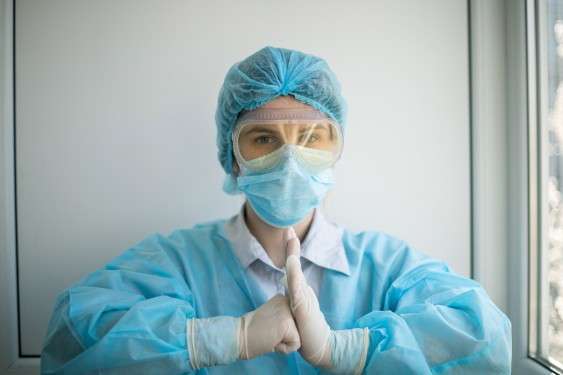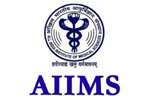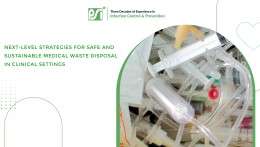One of the best Surgical Disposables company. I am dealing with them for the past 5 years,
their products are world-class. Their approach to trade is professional. All the best wishes to
them.
Objectives of Surgical Gowns
- By: Plasti Surge Industries

A surgical gown is a special gown made to protect the wearer which as the name implies is what a surgeon wears in an operation theatre whilst performing a surgery. Due to the nature of a surgery, where blood and other bodily fluids are involved which could be infectious to everyone present, it is imperative that a level of safety is maintained. And hence, surgical gowns which are made out of a spun-band polypropylene material are used by most of the medical fraternity.
Not to be confused with isolation gowns or PPE suits, surgical gowns are also a barrier to microbial contamination and fluid transmission during surgery. This is because they are made of a composition of hydroentangled polypropylene face fabric that is laminated with a microporous breathable film. This acts as a barrier to all types of microorganisms and viruses. Thus, in order to have a secure germ-barrier gown, whether reusable or disposable it requires a certain amount of a high barrier response and this is achieved with a special filament coating.
Types of Surgical gowns
- Cotton and Poly-cotton blend: These were made back in the day and have porous properties that can easily let micro-organisms pass through. These are reusable with poor barrier effects.
- Multi-layered: As the name suggests, these are two or three layers of fabric stitched together for safety purposes. While this is a better barrier than the traditional cotton gown, it still is not foolproof.
- Micro-filament: Although these are also similar to the cotton blend fabrics, the filaments here are tightly woven very fine filaments. They are reprocessed with a hydrophobic agent.
Mainly, there are two types of gowns:
Reusable: Made of woven fabrics for multiple uses, not only does it establish fewer medical waste issues, but it also is lower in cost. But the continuous process of cleaning and recycling deems it unfit for prolonged usage due to low barrier issues, to begin with.
Disposable: Although this comes at a higher cost due to the non-woven techniques, it is definitely the most popular kind in the healthcare industry because safety comes first. Even if it is meant for single-use, it passes through the sterilisation process before it reaches the end-user.
Parameters
There has been powerful, ingenious research and development have done on OR (Operating Room) garments and particularly on surgical gowns due to the basic nature of its purpose. Medical apparel meant for the healthcare workers and surgical gowns specifically have been developed as a blend of hydroentangled polypropylene face fabric that has been covered with a film that is microporous which makes it breathable. This acts as a barrier for almost all types of viruses and microorganisms. Some of these garments are reinforced with liquid and blood repellant layers and are often detachable after procedures.
The production of these garments has various parameters that have to be considered. Some of which are listed below:
- Raw materials - While there are plenty of fibers that are used, polyester monopolises the medical industry apparel mainly because of the high barrier property it has. It also contributes to lower costs, comfort levels and is readily available.
- Building parameters - In addition to the non-woven fabrics, twill and plain structured fabrics have been used too. But as new research takes place, it has been identified that twill fabrics have larger pores at the cross points and so it suffices to say that plain fabrics are more viable.
- Methods of sterilisation - Globally, there are four types of sterilisation that have to be followed; these are tested on surgical fabrics to see if the infections pass through. These are gas, irradiation, dry heat and steam autoclave. Gas and irradiation are low temperature methods. Dry heat and steam autoclave are high temperature methods. ETO gas sterilization is used most around the world because it is protected, efficient and much cheaper than the other methods.
Surgical gowns have levels of security that can protect from any potential transference of microorganisms during any surgeries. These are also critical to the transmission of fluids, bodily and other particulate matter which is procedural in a surgery.
Conclusion
The critical zone for a surgical gown is the barrier prerequisites for the composition and structure of surgical gowns, other healthcare insulating apparel etc. are based on the foreseen locale and the extent of liquid touch, given the normal condition's usage. The demanding zones comprise those areas where direct contact with blood, body fluids, and other possibly infectious goods, despite the fact that the areas outside of these zones can inadvertently be sprayed or splashed as well. So, the protective gear has to be chosen carefully.
It is better to prepare and prevent than it is to repair and repent.
-Ezra Taft Benson.
One of the best companies to partner with. Very responsive and best product quality.
Good experience and corporation for many years. Timely services are provided.
We have been associated with PSI since more than 20 years now. They have superior products, prompt service & courteous people. Using PSI’s products in turn makes our customer happy and helps us to do more business. Overall truly delighted with their customer service.














_iCEz.jpeg)
 +91-7798800781
+91-7798800781

xnak.jpg)




